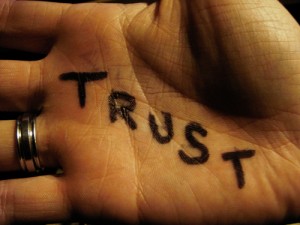In the client/service business, there’s always a lot of discussion about how the vendor can treat the client well, what constitutes good client service and how to yield valuable results. But it’s also important to think about what it takes to be a good client – like any relationship, it takes two. As the economy picks up and marketing budgets return, PR, marketing and social media agencies are adding to their rosters again – so it’s a good time to take a look at what it means to be a good client, in order to get the most out of your agency investment.
First, it’s important to understand why being a good client matters. Being a good client means you’re taking your investment seriously and that you’ve thought about your ROI. It also means that you understand a PR firm can’t work in a vacuum – you have a responsibility as a client to work with your agency as a partner – to provide resources and information, to participate in the process, to ensure decisions are pushed through in a timely manner, and to give thoughtful and productive feedback.
Make the Right Investments
Too often, companies want to invest as little as possible into PR – and yet have great expectations. They compare themselves to other companies who invest 10x what they do into PR and marketing, and expect the same level of awareness, which is unrealistic. The bottom line is that you get in what you put out – both financially and from a time perspective. PR is not only about good communication and strategy, but it’s about the time available to execute on that strategy. Promoting something in one place or only one time is much less effective than a continual stream of information – and having an agency get information out in a consistent manner means they need the time – and the budget – to do so. Yes, good – even great – things can happen on smaller budgets. Just be sure you aren’t expecting $35,000 results on a $5,000 budget.
Check Your Expectations
This is especially important for companies that want “quick hits” – that is, they expect an agency to quickly place really big feature media hits or social media campaigns that drive action – such as buying a product or downloading an app – and don’t want to “waste time” on trend pieces, market overviews that include competitors, product reviews, social media campaigns or other “less important” outlets like blogs. They don’t want to listen to the agency’s counsel on why other elements of PR matter just as much as media relations.
The truth is, a big part of PR is helping to establish, build and promote a brand – not just your product, but a credible and likable entity that people want to do business with and that they trust. This doesn’t happen overnight, or even in one week. Many companies don’t think about brand credibility as it relates to PR – or they don’t really care. They just want to launch a product or service, get media coverage and expect the world to want to buy from them. But for long-term success, it’s necessary to understand PR’s valuable role in building thought leadership alongside product promotion, and to stop comparing yourself to the 500 pound Gorillas in your industry. Unless you’re Apple, Twitter, Microsoft or Facebook, stop expecting your PR agency to get feature articles about you on the cover of Fast Company or Wired when you just launched a week ago (even Twitter, founded in 2006, didn’t land there for a couple of years). In 99% of cases, it’s not realistic. And when your agency gets you in a trend piece that also features those 500 pound Gorillas, respect the process – it’s all a part of building your industry credibility.
Be Respectful
Like any good relationship, an agency/client one is best when there is mutual respect, open communication and a sense of equality. Remember you hired a PR agency to help your business succeed, and you must trust that they are going to do that – understanding they are there as a helpful partner, not an adversary. If you talk openly and frankly with your agency, tell them the real story – including the fact that you do indeed have competitors, or when something goes wrong with the product or service that you offer – and bring them into planning early, they can do a better job. Withholding information, berating your account team when something goes awry, or never taking the agency’s counsel does not make a good, trusting partnership. Even the best PR teams can run into situations where a strategy didn’t work – and was out of their control – like your broadcast coverage being canceled because war broke out and dominated the news.
In the end, any good investment is worth protecting, and that includes the relationship with your PR firm. Make it a positive one and you’ll get more positive results.
 20 Blogs Every Entrepreneur Should Read
20 Blogs Every Entrepreneur Should Read

 When CareerCast posted a list of the
When CareerCast posted a list of the 



 According to the
According to the 